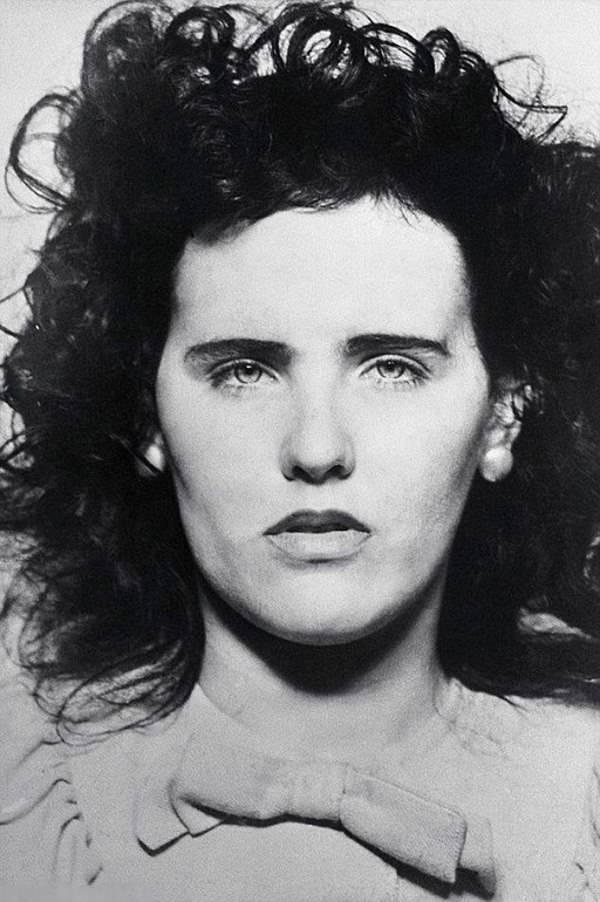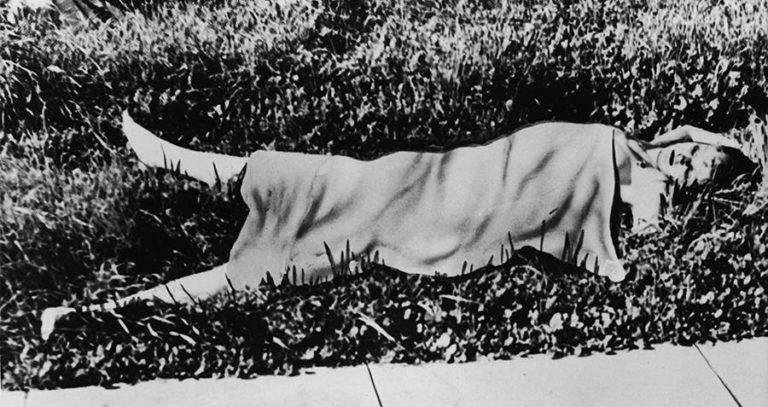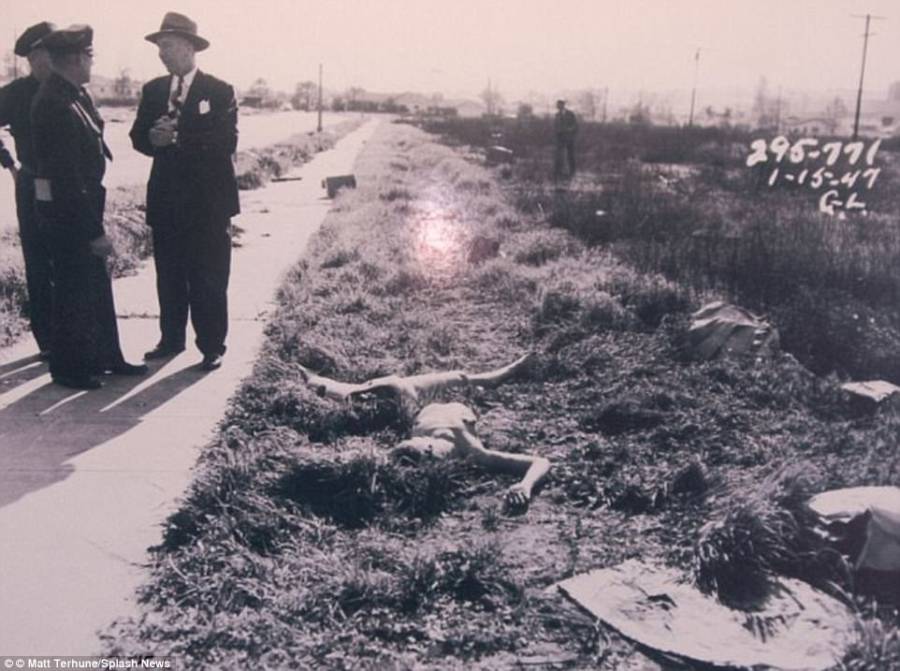Elizabeth Short, a.k.a. “The Black Dahlia”

Wikimedia CommonsA mugshot of Elizabeth Short from 1943, when she was arrested for underage drinking.
The “Black Dahlia,” Elizabeth Short, was an aspiring actress who wanted be famous more than anything else in the world. She never could have imagined, though, how she would earn it: as the victim of a brutal murder that has haunted America for decades.
On January 15, 1947, a young woman and her three-year-old daughter stumbled upon the body of 22-year-old Elizabeth Short. She was horribly mutilated, lying in the grass of a Los Angeles residential neighborhood, her body completely chopped in half.

Bettmann/Getty ImagesA sheet covers the horrific dissection of Elizabeth Short’s corpse.
The two pieces of her body were about a foot apart. Her intestines had been removed, folded up and then shoved back into her gut. There were ligature marks on her wrists, pieces of her skin had been removed, and her body had been completely drained of blood.
Perhaps the worst part, though, was her face. The killer had cut it open from the corners of both sides of her mouth to her ears, permanently etching a Joker-like smile on the young woman’s face.

Wikimedia CommonsThe body of Elizabeth Short lies uncovered in the grass on the day of one of America’s most famous murders: January 15, 1947.
One week later, an editor at the Los Angeles Examiner received a call from someone claiming to be the murderer. He’d kept souvenirs, he said, and he’d be sending them over in the mail.
He made good on his promise. Four days later, a postal worker pulled out a letter addressed to the Examiner. Inside was Elizabeth Short’s birth certificate, business cards, photographs, and her address book.
But like so many other famous murders, this one’s ensuing chaotic media circus only obscured the investigation. The police were overrun with too many tips to filter out the truth from the lies. They interviewed 12 possible Black Dahlia suspects and listened to more than 60 people who tried to insist they were the killers. But though suspects, including George Hodel, have become favorites of amateur sleuths, the police never managed to make a single arrest.





